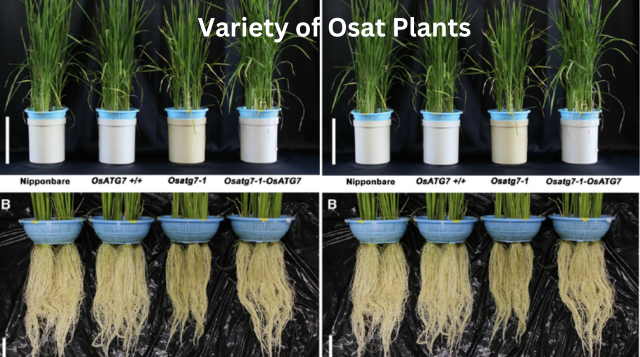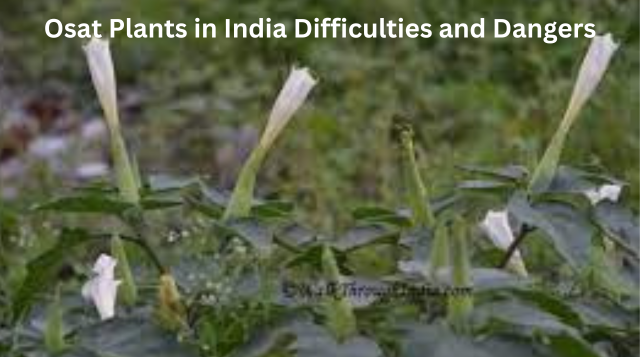Osat Plants In India the Unique and Endangered: Biodiversity Wonders
Introduction
Osat Plants In India: India is a place where there is mind boggling biodiversity, home to a stunning exhibit of plant species. Among these, the Osat plants stand apart as special and frequently jeopardized treasures. In this article, we will dive into the universe of Osat plants in India, investigating their qualities, environmental importance, social significance, and the squeezing need for their preservation.
Osat Plants: What Are They?
Osat plants, otherwise called Osath or Osath plants, are a different gathering of natural species tracked down in India. They are commonly described by their uncommon and particular highlights, which incorporate exceptional morphological, natural, and ethnobotanical perspectives. These plants hold massive worth in different natural and social settings, and they have been a subject of logical review and protection endeavors as of late.
Variety of Osat Plants
The expression “Osat plants” includes a wide assortment of animal groups, each with its own arrangement of novel qualities. They can be tracked down in various pieces of the nation, including the Western Ghats, Eastern Ghats, Western Himalayas, Eastern Himalayas, and the Northeastern locale. A few notable instances of Osat plants include:

A. Titan Arum (Amorphophallus titanium): Known as the “Body Blossom” because of its foul scent, this plant produces perhaps of the biggest unbranched inflorescence on the planet.
B. Rafflesia (Rafflesia Arnoldian): This parasitic plant creates the biggest blossoms on the planet and is local to parts of Southeast Asia and India.
C. Pitcher Plants (Nepenthes spp.): These meat eating plants have altered leaves that structure pitchers, catching and processing bugs for supplements.
D. Khasi Pinedom (Drosera Burmannii): A little, insectivorous plant tracked down in the northeastern district of India, known for tacky leaves catch bugs.
E. Phantom Orchid (Dendrophylax lindenii): This epiphytic orchid, frequently alluded to as quite possibly of the most extraordinary orchid on the planet, is known for its spooky, white blossoms.
Natural Importance
Osat plants assume a significant part in keeping up with biological equilibrium. Their remarkable qualities and variations add to the variety of vegetation in India and offer different environmental types of assistance. A portion of these administrations include:
A. Fertilization: Osat plants frequently have particular systems to draw in unambiguous pollinators. For instance, the foul smell of the Titan Arum draws in carcass bugs, which help in fertilization.
B. Bug Control: Flesh eating Osat plants like the Pitcher Plant assist with controlling bug populaces in their environments.
C. Therapeutic Potential: A few Osat plants have conventional restorative purposes and contain bioactive mixtures that can be saddled for drug purposes.
D. Protection of Biodiversity: These extraordinary plants frequently act as leader species, causing to notice the preservation needs of their environments.
Also Read: Aryan Khan Biography and his new company
Social Importance
Osat plants are naturally critical as well as socially significant in India. A large number of these plants serious areas of strength for have to native societies and are basic to customary ceremonies and convictions. For instance, the Titan Arum, with its huge inflorescence and impactful scent, has been related with different social functions in certain pieces of India. Likewise, Rafflesia is respected with worship in neighborhood customs and has an exceptional spot in native information frameworks.
Difficulties and Dangers
Notwithstanding their natural and social importance, numerous Osat plants in India face extreme dangers and difficulties:
Environment Obliteration: The annihilation of regular natural surroundings because of urbanization, farming, and deforestation represents a critical danger to these plants.
Overexploitation: Some Osat plants are gathered for their extraordinary elements, which can prompt overexploitation and populace decline.

Environmental Change: Changing climatic circumstances can influence the dissemination and endurance of Osat plants, especially those adjusted to explicit conditions.
Absence of Mindfulness: Many individuals know nothing about the presence and significance of Osat plants, which hampers preservation endeavors.
Protection Endeavors
Perceiving the significance of Osat plants, various preservation endeavors are being made to safeguard these exceptional species in India:
Safeguarded Regions: A few Osat plants are tracked down in safeguarded regions and public parks, where they get some degree of security from environment obliteration and poaching.
Examination and Documentation: Researchers and botanists are effectively associated with recording and investigating these plants to more readily figure out their science and environment.
Mindfulness and Instruction: Drives pointed toward bringing issues to light about the significance of Osat plants and their preservation have been sent off.

Legitimate Securities: Some Osat plants are safeguarded under Indian natural life and biodiversity regulations, which make it against the law to collect or exchange them without appropriate licenses.
Ex Situ Preservation: notwithstanding in situ protection inside their normal living spaces, endeavors are being made to monitor Osat plants in professional flowerbeds and ex situ offices.
Association of Native People group: Cooperation with native networks and customary information holders is fundamental for the economical protection of Osat plants.
Conclusion
Osat plants in India address a remarkable and different gathering of natural species that hold biological and social importance. They are vital to India’s biodiversity, assume significant parts in their separate environments, and are profoundly woven into the embroidered artwork of native societies. The preservation of these plants isn’t just fundamental for safeguarding India’s regular legacy yet additionally for keeping up with the biological equilibrium and social customs related with them. Endeavors to safeguard and monitor Osat plants in India are basic to guarantee that these natural fortunes keep on flourishing for a long time into the future.
More Read: Osat Plants In India

आप सभी का आपकी अपनी वेबसाइट businessplanhindi.in में स्वागत है मुझे बिज़नेस, पढाई, और जनरल नॉलेज के बारे में पढ़ना और उसकी जानकारी देना बहुत पसंद है इसी लिए मैंने ये वेबसाइट बनायीं है आप सभी अपना प्यार इस पर बनाये रखे धन्यवाद

3 thoughts on “Osat Plants In India the Unique and Endangered: Biodiversity Wonders”